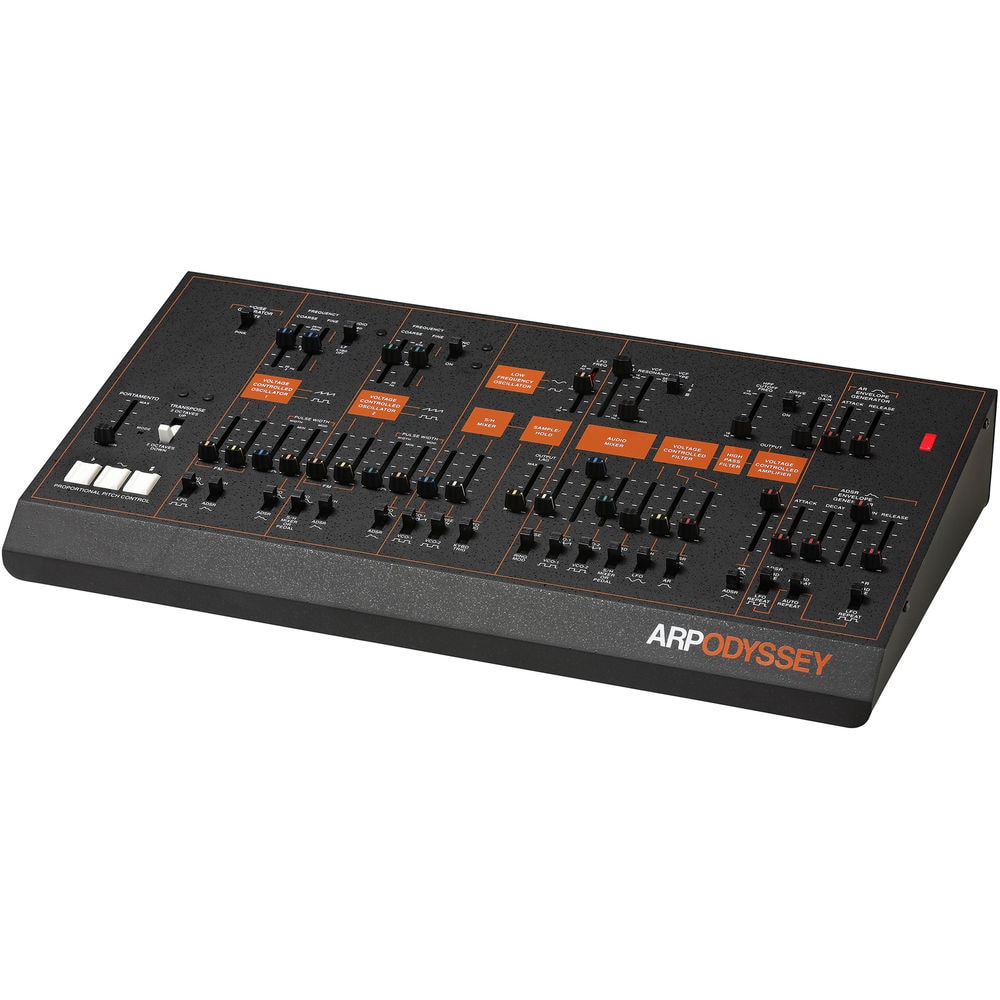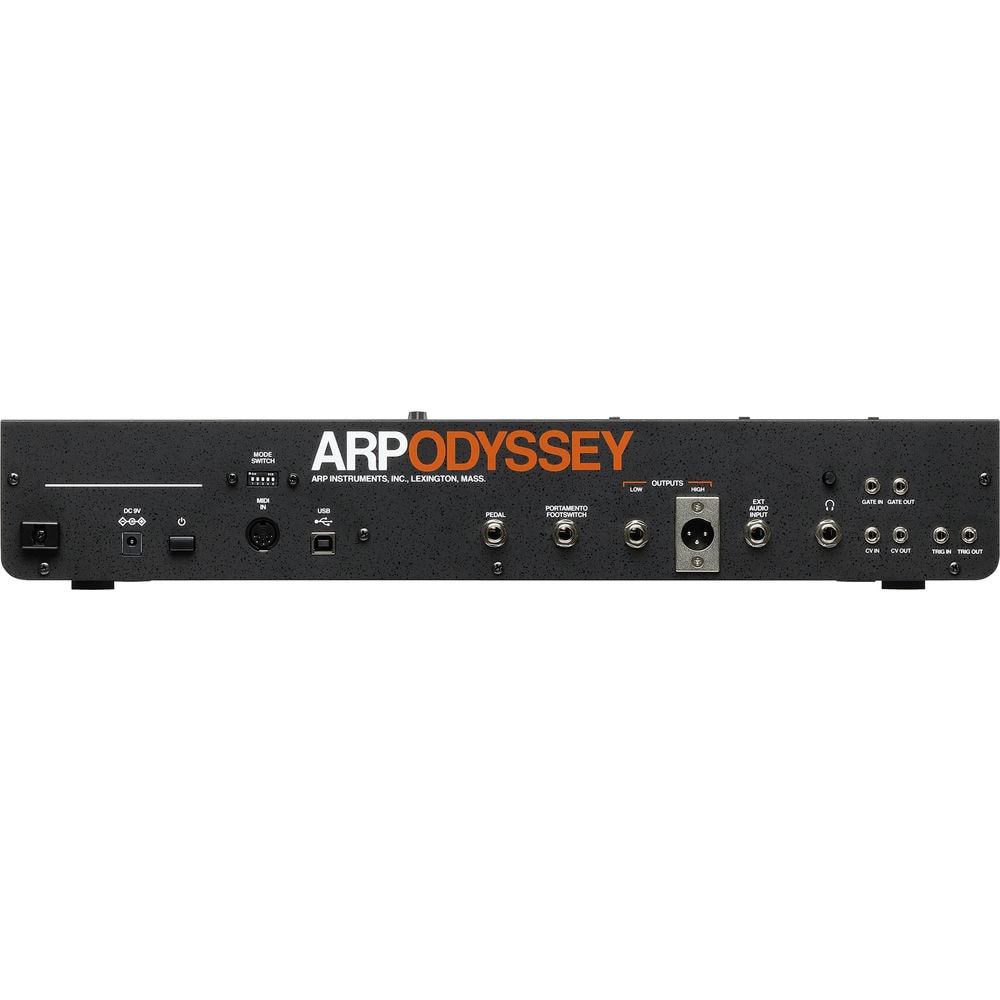Korg ARP Odyssey
The Korg ARP Odyssey is a duophonic synthesizer module based on the original 1972 ARP Instruments synth, which was a staple for musicians across the world. With it’s compact, keyboard-less body, it contains the exact same circuitry as the original. Making it even easier for you to obtain that rich analog sound you’d gey from an original ARP Odyssey.
Enhance your production environment with a powerful analog sound that can’t be reproduced by any plugin. Additionally, perform in conjunction with an external sequencer such as the KORG SQ-1. If you prefer playing with a keyboard, the Arp Odyssey gives you the ability to connect your module to your favourite keyboard through MIDI. While it newly supports MIDI pitch bend.
Unmatched crispness, edgy bite, and snarling aggression
Originally introduced in 1972, the ARP Odyssey became renowned for its distinctive sound. With its wide range, shrieking leads, industrial effects, squelchy basses and much much more. Additionally, the Odyssey is duophonic, meaning you can play two notes at once. While oscillator hard sync lets you craft those visceral tearing patches famously deployed by The Cars on their 1979 hit “Let’s Go.”
Your choice of three classic filter designs
Brought in as a consultant for the new ARP Odyssey was its original design engineer, David Friend. So with absolute authenticity a must, the new Odyssey gives you access to all the of the original filter types, available at the flick of a switch. Type I was a 2-pole, with an open sound and biting resonance. Type II was a 4-pole ladder filter: round, fat, and rich – great for basses. While type III was also a 4-pole design and similar in many ways to its predecessor, but smoother and silkier when you pushed the resonance.
Modulation and more
Furthermore, ARP Odyssey gives you generous modulation options. Including two envelope generators – an ADSR and an AR. Another addition is the Sample and Hold feature, allowing you to modulate your pitch and settings using a variety of waveforms. Generate a glide effect between voltage steps with the Output Lag slider. Rounding off the edges of the LFO waveform. Finally, using Ring Modulation in conjunction with oscillator sync or the wealth of pitch modulation available; you can create a manner of clangorous, thunderous – and completely magical musical mayhem.







